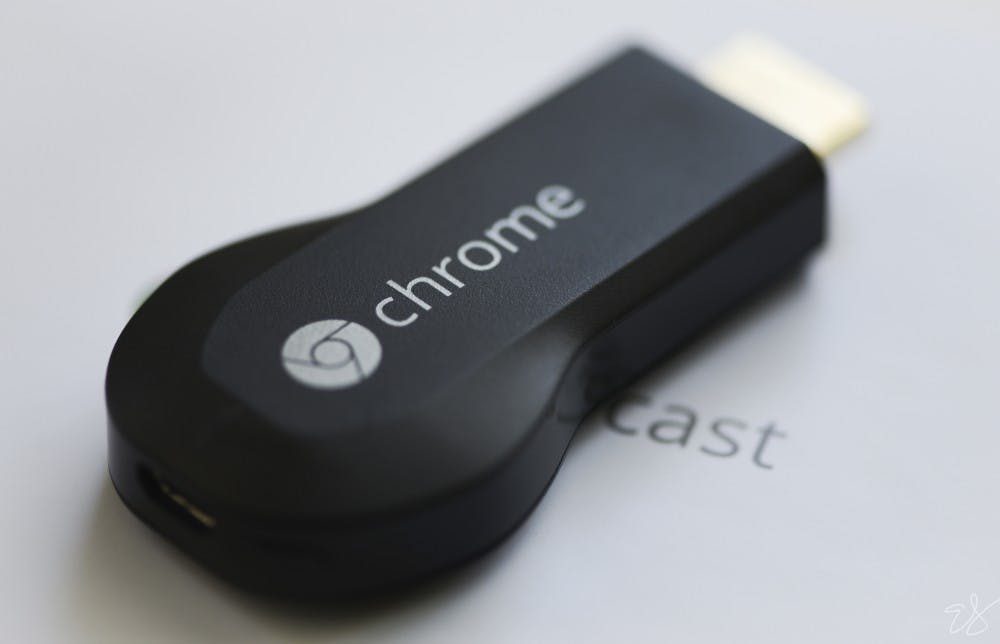In a world of instant access to entertainment, it can be difficult to figure out which system will best serve your personal viewing needs.
Netflix was the catalyst for this movement, the first streaming service that everyone needed to have in order to binge-watch, reminisce over old favorites and discover new “Netflix-exclusive” series. It seems the days of cable TV are numbered as these services are providing a more user-specific experience.
After Netflix, Amazon and Hulu began to compete with the service, viewers had far more options. The services cost so little a month, it seems silly to not buy in – until now.
The latest in streaming technology includes Apple TV, Chromecast and the Amazon Fire Stick – game changers in their own right. But which one would serve best for your needs? Here’s some information about all of the available technology, so you can make the right investment.
Apple TV
This device is considered a digital media player and a microconsole (think mini PlayStation 4 or Xbox) that streams from multiple sources to play onto a TV set. It’s HDMI compatible so connecting is easy. A remote is provided and used to control the set. It includes streaming from a variety of services including Netflix, Hulu Plus, Vevo and TV Everywhere, which have channels from normal cable television.
The device is compatible in particular with any other Apple device, which is helpful in particular for using iTunes and AirPlay.
This most recent version of the device, the fourth generation, averages between $175 and $200 depending on where you buy it. An older version costs much less, starting as low as $55.
The streaming service is great for having a huge variety of sports, music and TV shows, though it’s on the most expensive side. It’s the type of investment to split with roommates in order to buy they best version you can afford.
Chromecast
This device, made by Google, plugs right into the HDMI port on your TV like a USB. It’s been around for a couple years now, which has given Google time to perfect its product. It only had 256K of memory, which isn’t a lot in terms of storage but ideal for the purpose of the plug-in – a gateway. Connect the device to your WiFi and use your phone – any type, including iPhone and Android – as a remote control to control what content you want to watch.
The key is to have apps like Netflix, Hulu, HBO Go and Crackle on your device. The price is a standard $35 but this depends upon where you order it from or whichever store you pick it up from.
Positive aspects include easy access to your shows and movies via connecting your phone to the TV, easy set-up and music, sports and exercise apps.
On the other side, you are paying the cost of having all these services – a little under $10 for each – on your phone and sometimes the device is temperamental and won’t “cast” your content onto the television.
Amazon Fire TV Stick
The Amazon Fire TV Stick is another HDMI-compatible device used for streaming services. It has more storage than Chromecast and was made by Amazon to compete with similar services being offered. It exclusively streams Amazon Video on top of Netflix and HBO Go like other services. Specifically, it is geared toward those looking to stop paying for cable and streams channels from AMC to HGTV to CNN. You can even upload photos and videos onto the device
On Amazon, the Fire TV Stick costs $40, which isn’t too steep – especially compared to the other streaming devices. Like Chromecast, it can turn your phone into a remote control, which is perfect for convenient streaming capabilities.
On the plus side, the Fire TV Stick is unique in the sense it allows Amazon Prime members special access to certain television shows or other services. It has a wide variety of choices as far as streaming and is relatively simple to use.
The Fire TV Stick isn’t anything outstanding compared to other devices though – it essentially does the same thing as the other two, with just slightly different selections.
No matter what device you end up picking, this is the technology of the future. The modernization of television watching to make the experience more user-specific is exemplified in these sorts of devices.
Tori Roseman is the senior features editor and can be reached at tori.roseman@ubspectrum.com





